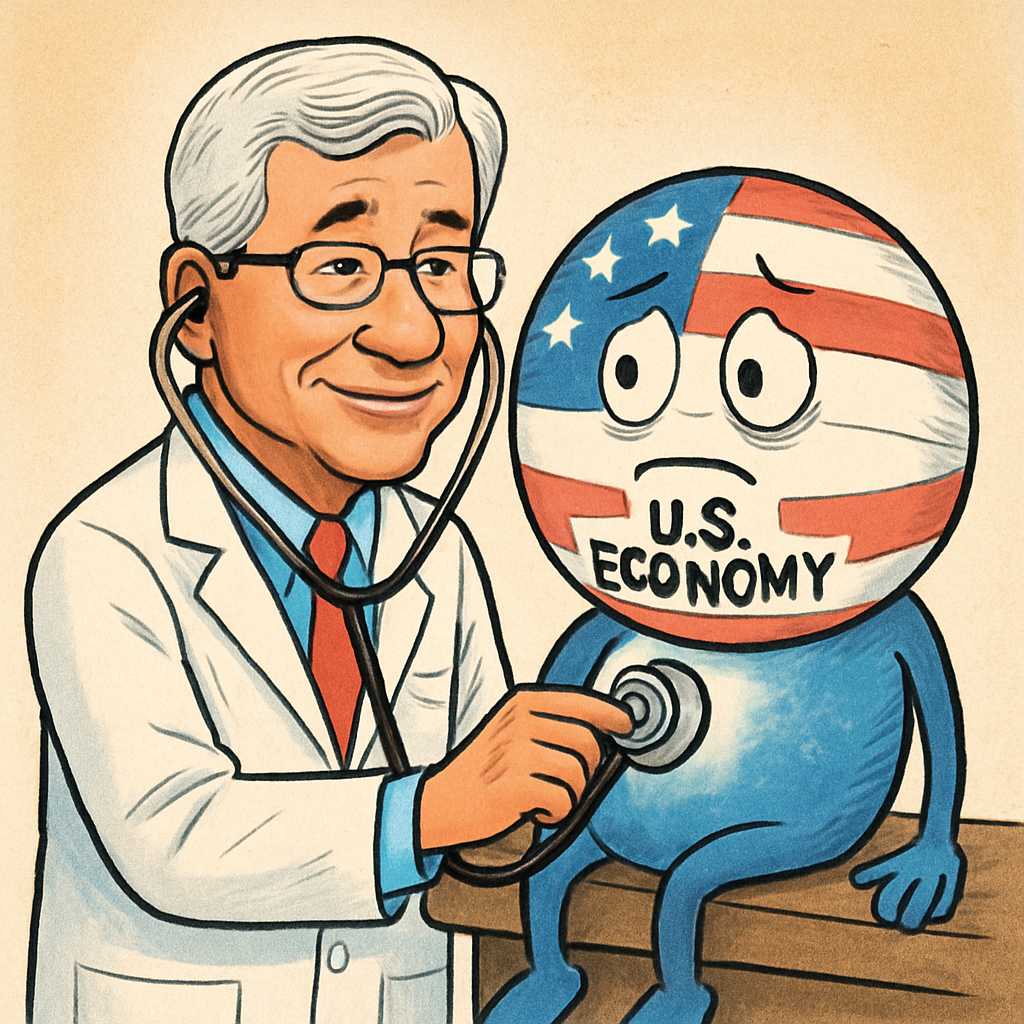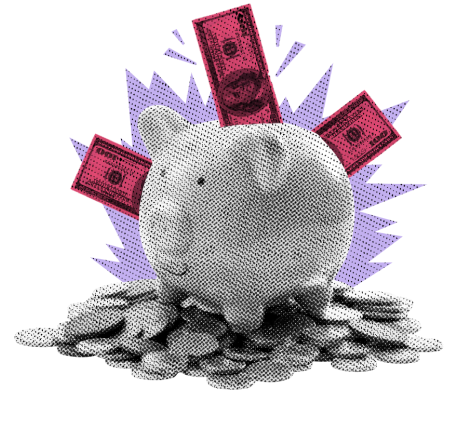
A deep dive into what JPMorgan and Wells Fargo just told us about the state of the American consumer. Jamie Dimon warns vigilance, not collapse, as credit quality holds firm.
KEY TAKEAWAYS
-
The labor market is softening, but consumer spending remains strong
-
JPMorgan and Wells Fargo both reported healthy credit portfolios
-
Delinquencies and charge-offs remain contained
-
Credit demand and revolving balances are rising
-
Consumption continues to anchor US GDP growth
MY HOT TAKES
-
Consumption is the true economic driver, not policy noise
-
Bank earnings are real-time diagnostics of consumer health
-
Jamie Dimon’s “cockroach” metaphor highlights vigilance, not fear
-
The labor slowdown isn’t yet translating into credit weakness
-
The consumer remains the guardrail keeping recession at bay
-
You can quote me: “As long as the consumer’s credit card still swipes, the economy still breathes.”
Quarterly checkup. I am just going to throw it out there. I am obsessed with consumption! AND I am not talking about food and fun beverages. I like those, but my long-time followers know exactly what I am talking about when I flag consumption and exactly why. Well, it is so important that I am going to repeat it. CONSUMPTION MAKES UP ⅔ OF GDP! Consumption is the goods and services that you and I purchase. If we stop buying stuff, the economy quickly sinks into an economic malaise–otherwise known as a contraction–otherwise known as a… recession. We don’t want that, so we, collectively, should be very interested in the health of consumers. Got it? Great!

Are consumers and consumption healthy? Well, let’s take a step back and ask a more basic question. What drives consumer health? That is simple, disposable income and confidence. I am not going to get into confidence today, but that is a very broad and important topic. The other principal driver is, of course, money to spend! We get that in two ways: income and investment gains.
We derive income from… um, employment. If we lose jobs, we have less to spend. Moreover, if we are worried about losing our job or the labor market is soft, we lose confidence. So, the health of the labor market is extremely important. It is also ½ of the Fed’s dual mandate, and I suspect (chuckle chuckle) that it is for that very reason.
In case you haven’t heard, the labor market is softening a bit. The official numbers from BLS threw us 4 weak months of jobs growth, and we missed that last report because of the shutdown. Last month, an annual reconciliation of the jobs numbers revised the total newly added jobs in the year ending in March down significantly. Private job trackers like ADP printed two consecutive months of job losses. Yesterday, Jerome Powell agreed that the labor market was soft. Thanks for pointing that out, Mr. Chairman. 🤣 So, the labor situation is important for consumption and it is pretty clearly faltering a bit. Does that spell disaster for the US economy? Maybe. Things can turn around, and the US consumer… well, seems unstoppable. We have experienced many slowdowns like this in the past few decades and the economy–consumption seems to be impervious.

How do we know if consumption is doing well? We can refer to the official “consumer spending” aggregate reported by the BEA, but that is always backward looking (we only know spending from last quarter). We can also refer to the Consumer Spending–also from BEA–data from September, which will come out later this month… but not if the shutdown is still on. 😠 So, I suppose that we are pretty much in the dark. BUT WAIT!! Welcome to earnings season! Earnings season started in earnest yesterday with the financials, specifically the big banks. The parade’s master of ceremony is none other than JPMorgan Chase. Wouldn’t you know it, JPM is the largest issuer of consumer credit cards by purchases. Can you see where this is going?
So JPMorgan is not just any bank–it is the bank when it comes to tracking consumer credit behavior. It sits at the crossroads of Main Street spending: credit cards, auto lending, consumer deposits, payments, etc. When JPM reports strength–or cracks–in its credit portfolios, that’s like the canary singing in the coal mine..
Yesterday’s earnings did not disappoint in that regard. JPMorgan delivered better‐than‐expected results across the board. Importantly for our thesis, the consumer side held up, and by many indications, quite well. Credit quality remains solid, charge-offs are manageable, delinquencies are stable (or even a hair favorable), and consumer revolving balances are rising. That suggests Americans are still willing and able to borrow, which is a concrete sign of both confidence and financial health.

Take, for example, Jamie Dimon’s colorful caution: “When you see one cockroach, there are probably more.” He was referencing the fallout from a troubled subprime auto lender, Tricolor and signaling that while that singular failure is small in JPM’s balance sheet, it underscores that credit stress can sometimes emerge from hidden corners. Yet, crucially, he didn’t sound panic–he warned vigilance, not collapse. FYI, that’s a classic Dimon move. His commentary is always part pragmatism, part wise-old banker.

Meanwhile, CFO Jeremy Barnum explicitly emphasized resilience in consumer credit. He noted that early stage delinquencies are “stable and slightly better than expected.” That’s not the language of fear, but rather, that is the language of a business that’s watching but not panicking.
Wells Fargo’s commentary added a second data point. Their credit provision dropped year over year, suggesting they see fewer losses ahead. Their CEO noted that consumer loan growth is strong, and credit quality, by their metrics, continues to be favorable.
So, JPM and Wells–two of the biggest players–are flashing green on consumer credit. That’s not a coincidence. That’s a signal.
Now, none of this means there is no risk ahead. We should absolutely respect that. Dimon’s cockroach metaphor was a reminder that just because all is well on the surface does not mean nothing lies beneath. The softening in the labor market, the recent weak jobs prints, and pressures on inflation and interest rates are the possible cracks in the foundation.
But here’s the central point I want you to walk away with: the consumer is both the engine and the guardrail of this economy. Without sustained consumption, GDP shrinks, corporate earnings shrink, job growth stalls–and the whole cycle can flip. With consumption strong, credit healthy, and borrowing intact, the U.S. economy has a fighting chance to weather those potential headwinds.
Yes, the labor market is showing softness. Yes, interest rates are elevated. Yes, inflation and geopolitical risks continue to loom, but consumer credit strength, at least as validated through the banks’ own performance, suggests that the average American still has some runway. They are still spending, still borrowing carefully, and still supporting consumption.
Consumption is ⅔ of GDP, folks. That’s not a throwaway fact, that is the anchor of growth in this economy. When consumption weakens, everything else struggles. When it holds, it can prop up sectors even in a tougher macro environment. That’s why I monitor bank earnings so obsessively: because their credit metrics aren’t just financials, they’re forward-looking indicators of the health of the consumer.
This quarterly checkup gives us reason to be cautiously optimistic. The banks are showing us that–at least for now–the consumer is holding up. And as long as consumers can spend (and borrow), the broader economic story isn’t over yet. So I’ll stay obsessed. Because you can’t love macro without loving consumption. 😉
YESTERDAY’S MARKETS
Stocks had mixed close yesterday with early gains declining late in the session. Equities erased earlier losses on strong earnings, but sold off in response to President Trump lashing out at China threatening to stop purchasing Cooking oil from them–amongst other threats. Stocks–or rather the algos–didn’t like that.

NEXT UP
-
Empire Manufacturing (October) is expected to have improved to -1.8 from -8.7
-
CPI - Not going to happen today because of the shutdown 🥹, but we will get it on October 24th – better late than never… I guess.
-
Fed Beige Book, which provides anecdotal data about economic health across the Fed banking regions will be released at 2:00 PM Wall Street Time.
-
Fed speakers today: Miran, Waller, and Schmid.
-
Important earnings today: Synchrony, PNC Financial, Bank of America, Morgan Stanley, Abbott Labs, Prologis, United Airlines, and JB Hunt Transport.
.png)

